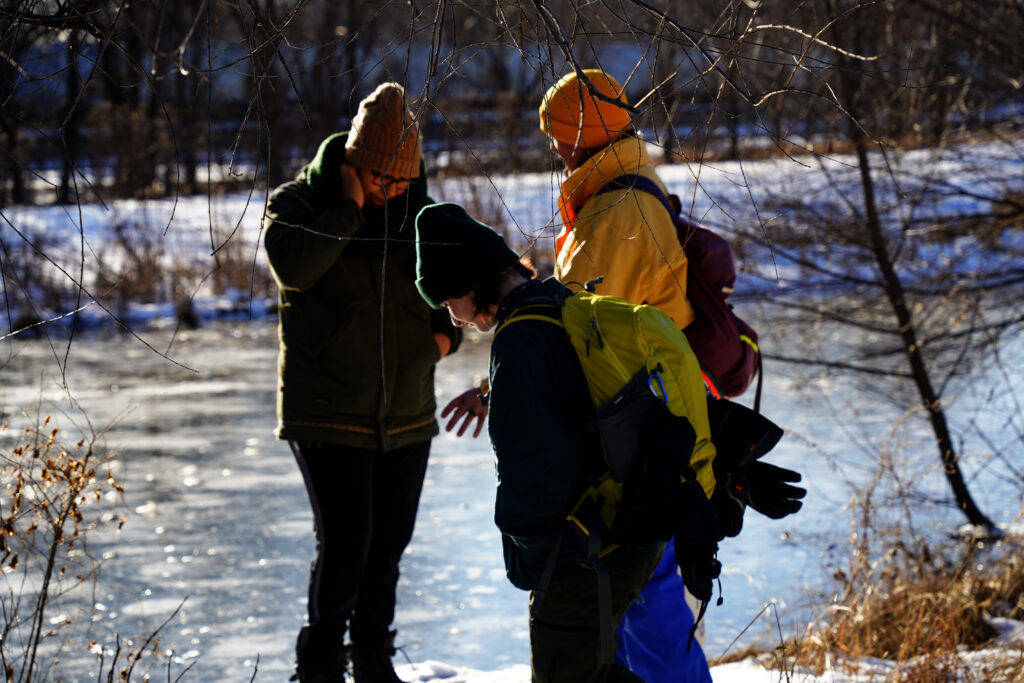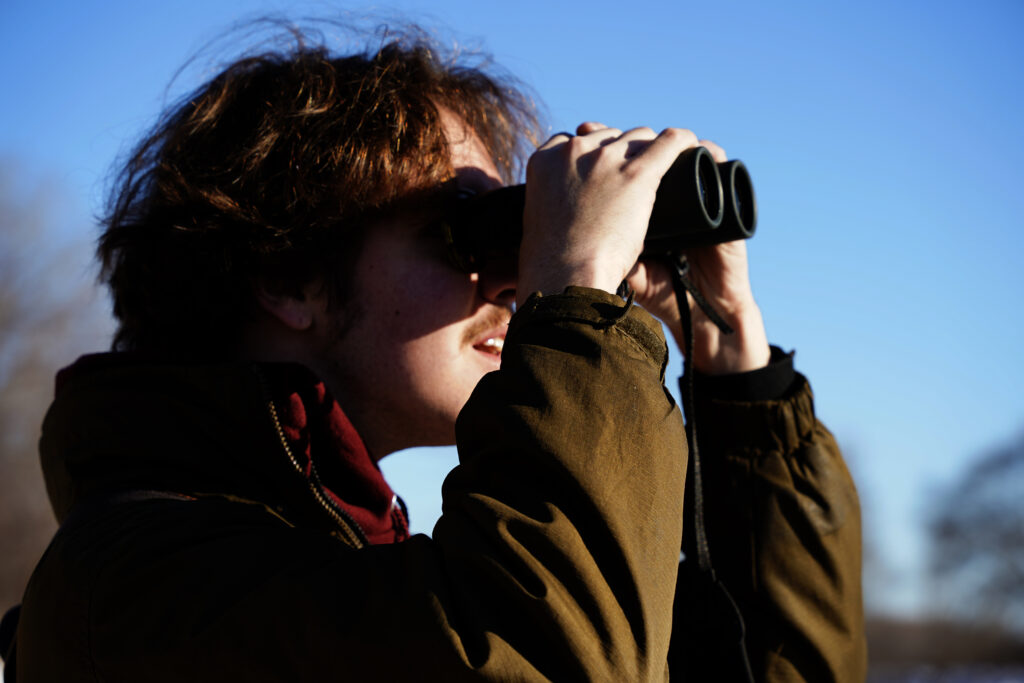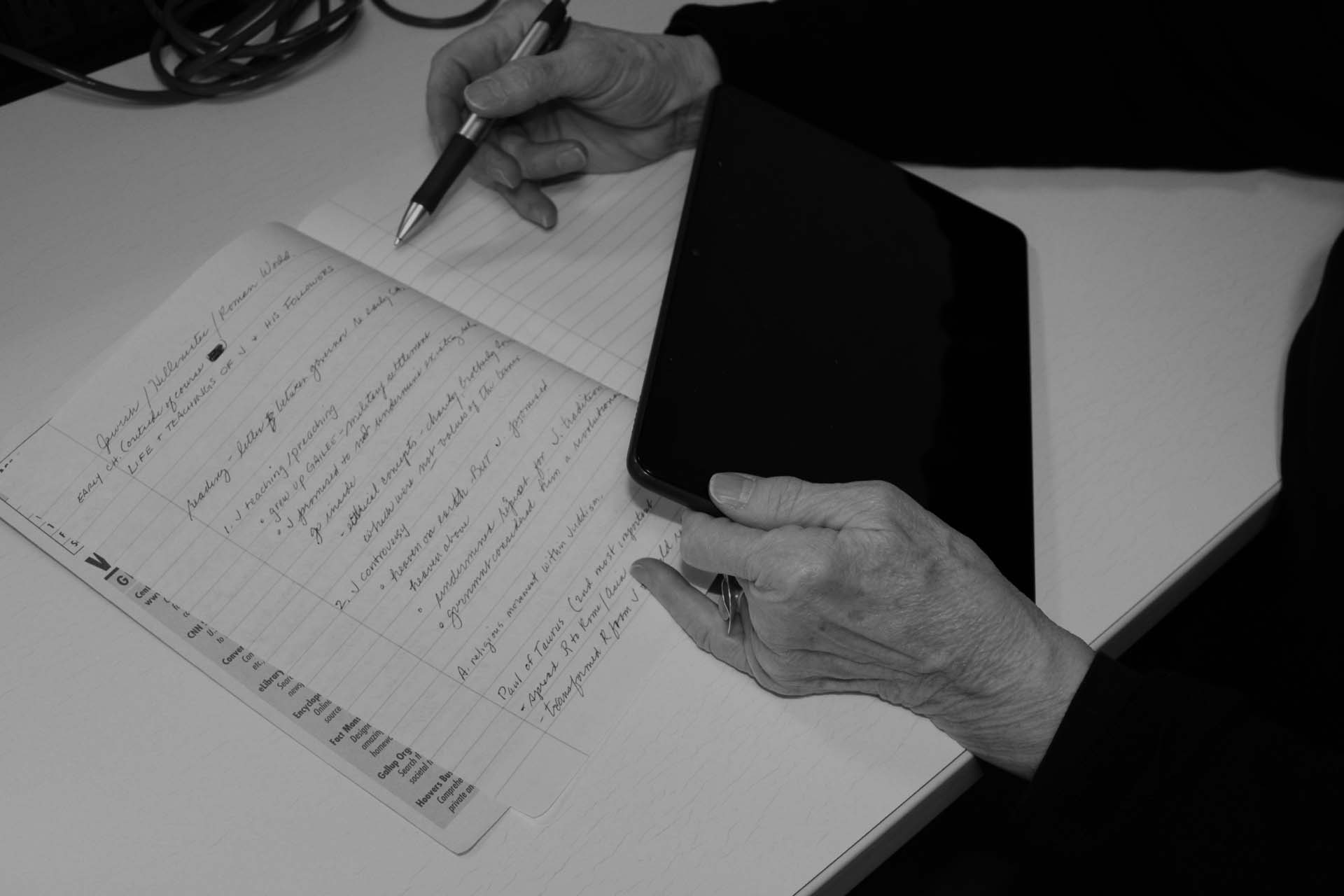Searching for the Source
By Rosalind Ding
Tracks appear in the snow in Wakan Tipi Awanyankapi, a sacred Dakota site near the Mississippi River in St. Paul on February 18, 2024. Photo by Rosalind Ding
“Do you see three toes going forward or just two toes going forward? Can you see teeth marks in the bark?” – Whitney Sansom
Snow tracking, a specific type of tracking that occurs in frosty climates, allows people to understand what kind of animals are living in a specific area. By identifying certain signs animals leave behind, such as their scat, rubbing on the trees or the remains of their prey, wildlife biologists can grasp the knowledge and understanding of what an animal’s behavior is like. Tracking could happen on various soil types, such as mud or sand. Different areas with an assortment of wildlife determine which process should be used for tracking.

Photos by Rosalind Ding
By understanding tracking, you can identify a red squirrel versus a gray squirrel based on their track mark. Just like puzzle solving, Whitney Sansom, a member of the Minnesota Tracking Club, said one of the biggest things to do before you go on track is to know what kind of habitat it is and what you expect to live there. When you see tracking signs, you start by identifying different shapes and sizes, narrowing them down into small pieces based on their location and finally putting together a broader picture.

In preparation for snow tracking, you will need essential tools, including warm clothing; navigation tools such as a map, compass or GPS device; comfortable shoes, like snowshoes or skis depending on the weather; avalanche safety gear like a beacon, probe and shovel; a backpack that can carry all the essentials; and a first aid kit prepared with sun protection, emergency gear, food and water and communication devices like a radio or phone. Most importantly, bring a field guidebook and travel with groups to share and compare your results with others.





